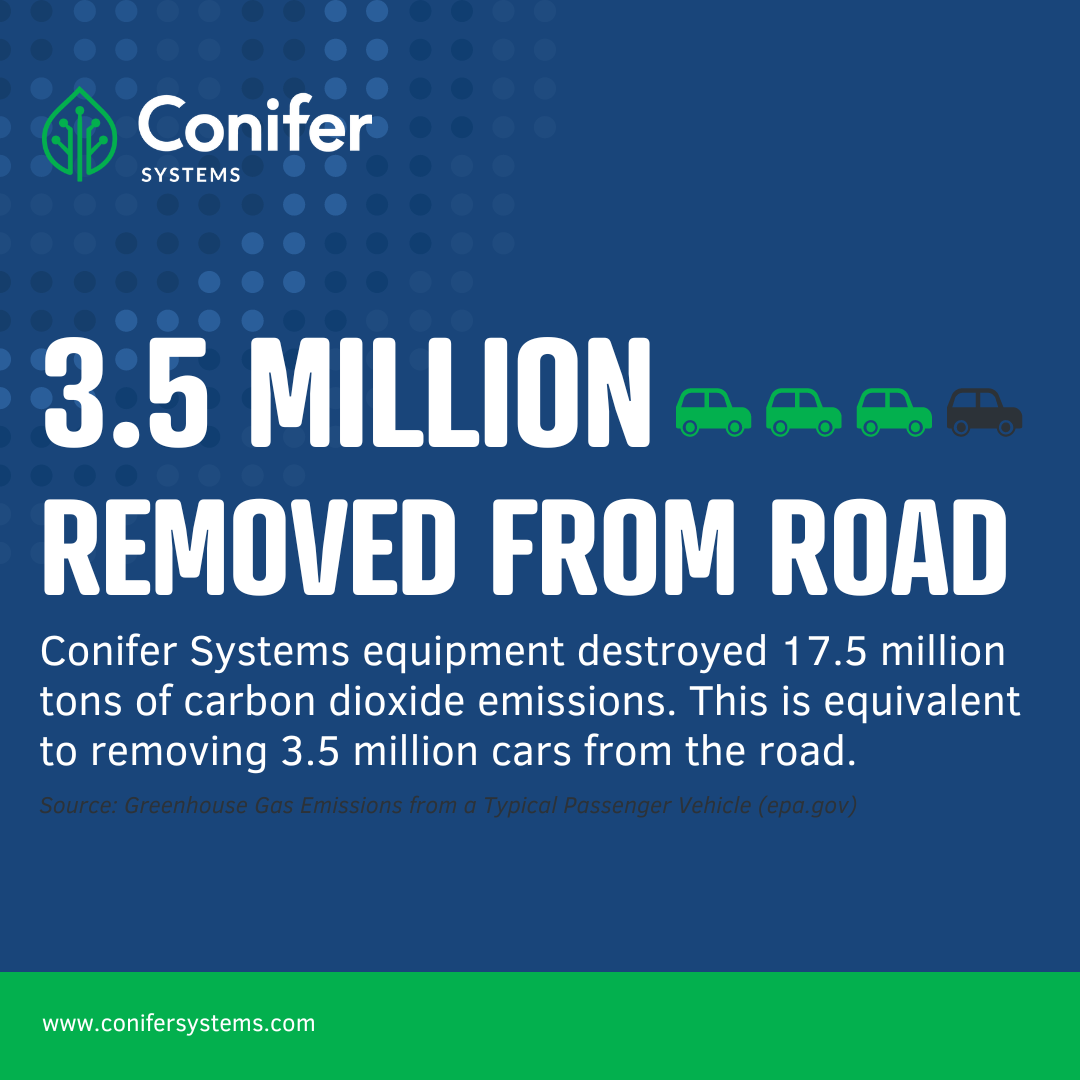Achieving carbon neutrality means achieving net zero carbon dioxide emissions. This can be done by reducing greenhouse gas (GHG) emissions generated by residential and commercial activities through the combustion of fossil fuels and petroleum products. Carbon neutrality is a term used in relation to various industrial activities such as transportation, energy production, agriculture, and other general industry sectors.
Greenhouse Gases include:
- Carbon Dioxide: Carbon dioxide or CO2 is the primary greenhouse gas emitted through human activities. It is the standard that other GHG are measured against when determining the weight of environmental damage emissions pose.
- Methane: Methane accounts for 20% of global GHG emissions. Methane has a shorter lifetime in the atmosphere than CO2, but it is 25 times more potent at trapping heat.
- Nitrous Oxide: Nitrous oxide is a main source of air pollution. It occurs through combustion in many types of industrial processes. One pound of nitrous oxide has 265 times the impact of carbon dioxide. It accounts for 6% of the U.S. GHG emissions.
- Fluorinated Gases: Fluorinated gases containing fluorine are potent greenhouse gases emitted from various residential and commercial sources. They are among the most long-lasting and powerful emissions resulting from human activities.
Reduction
Carbon emissions reduction can be done by moving to industrial practices that reduce or produce no greenhouse gas emissions. These practices can include moving toward alternative energy sources or incorporating sustainability.
Offset
Carbon offsetting balances out greenhouse gas emissions by reducing or eliminating them. Carbon offsets often take the form of carbon credits. Carbon credits are transferrable financial instruments that represent an emissions reduction that can be sold as a credited offset. Offsets and credits are both quantified in terms of carbon dioxide equivalents, measured in tons.
Conifer Systems Solutions
At Conifer Systems, we specialize in developing, producing, and implementing advanced emissions control systems for various industries that aid in carbon neutrality goals. Our aim is to help businesses meet and surpass their environmental objectives through our aftermarket services. By providing standardized solutions, we ensure that our systems are cost-effective, reliable, and delivered in a timely manner. We prioritize your business goals and environmental and compliance obligations when designing solutions that cater to your emissions control requirements. Our technical expertise has been refined over the past twenty years, as we have supplied systems to a diverse range of industries.

Thermal oxidization is a process that destroys hazardous compounds at high temperatures and converts them into carbon dioxide, water vapor, and heat before releasing them into the atmosphere.
The process of thermal oxidization involves breaking down harmful pollutants and emitting gases that are less harmful to the environment.
- Direct-Fired Thermal Oxidizers
- Regenerative Thermal Oxidizers
- Thermal Recuperative Thermal Oxidizers
- Catalytic Oxidizers
- Vapor Combustor Units
- Enclosed Flares
Other Ways to Achieve Carbon Neutrality
Alternative Fuel
As the need for sustainable and carbon-neutral solutions continues to rise, alternative forms of fuel are becoming more popular for thermal oxidizers. Thermal oxidizers are widely used to decompose hazardous pollutants and release gases that are less harmful to the environment. However, the use of traditional fossil fuels such as natural gas and oil can have negative impacts on the environment and reduce harmful emissions. Therefore, alternative forms of fuel are being explored and developed to provide more sustainable solutions.
One alternative form of fuel that is gaining popularity is biofuels and renewable natural gas (RNG). Biofuels are derived from renewable sources such as plant matter, algae, and animal waste while renewable natural gas comes from more industrial sources like methane from landfill gas or digesters at water treatment facilities. These are considered carbon neutral as they release the same amount of carbon dioxide during combustion as they absorb during their growth. Conifer Systems can utilize renewable landfill gas to fuel our equipment as our parent company, Archaea Energy, is one of the leading RNG producers in the U.S.
Electricity is also being explored as an alternative form of fuel for thermal oxidizers. Electric thermal oxidizers use electricity to generate heat and decompose pollutants. They do not produce harmful emissions and can be powered by renewable energy sources such as wind and solar power. Conifer Systems has pre-engineered solutions for electric regenerative catalytic oxidizers (eRCO) and regenerative thermal oxidizers (eRTO). These systems allow for flexibility when some locations do not have access to natural gas or have strict regulations against its use.
Carbon Credits
Thermal oxidizers can create carbon credits by reducing the emissions of harmful pollutants into the environment. Carbon credits are a way to offset carbon emissions by investing in projects that reduce or eliminate greenhouse gas emissions. By using alternative forms of fuel such as biofuels, hydrogen, or electricity, thermal oxidizers can significantly reduce their carbon footprint and create carbon credits that can be sold or traded on the carbon market. These carbon credits can be a valuable source of revenue for companies that are committed to sustainability and reducing their impact on the environment. Overall, thermal oxidizers can play an important role in creating a more sustainable future by reducing emissions and creating carbon credits.
Heat Recovery
Heat recovery in thermal oxidizers refers to the process of capturing and reusing the heat generated during the oxidation of pollutants. This heat can be used to preheat the incoming air or fuel, reducing the amount of energy required to operate the thermal oxidizer. By recovering this heat, companies can improve their energy efficiency and reduce their operating costs. Additionally, heat recovery can help to reduce greenhouse gas emissions by reducing the amount of fuel required to operate the thermal oxidizer. Overall, heat recovery is an important aspect of thermal oxidizer design and can have significant benefits for both the environment and the bottom line.
Sources:
https://www.epa.gov/ghgemissions/overview-greenhouse-gases#nitrous-oxide
https://www.epa.gov/gmi/importance-methane
https://www.epa.gov/ghgreporting/fluorinated-greenhouse-gas-emissions-and-supplies-reported-ghgrp


